Carbs for Climate
Featuring farro arancini, buckwheat onigiri and rye fig newtons.
Who loves bread? Everyone!
That's why there's phrases like "bread is the staff of life" and "let's get this bread."
Sayings like these show that grains and starches are the foundational foods that keep us moving and humanity turning. I'm turned off by the periodic anti-carb crazes that have hit American society throughout my life. They’re a misguided attempt to solve a whole host of deep, systemic problems in in our society, and they deny a deep human truth.
So, carbs are great. But, yes — the hyper-industrialized way we eat them now causes a huge range of problems, from childhood obesity to climate change to more.
One big issue: today, the world over, we get the bulk of our calories from just three foods: wheat, corn, and rice.
Why? It’s complicated, and I’d love to explore this question as I continue this newsletter. But basically as we industrialized, we bulldozed over a lot of foods. Growing just a few foods — monocropping — drives climate change and destroys biodiversity. And it’s bad for our health.
There's nothing intrinsically wrong with wheat, corn and rice. But we rely too much on just these three -- and often in processed and ultra-processed forms (for the record: I am not immune to eating too many processed carbs!)
One solution is something foul and tragic like rebranding chicken patties as hamburger buns.
Another option is to explore grains and starches beyond just these three.
There are lots of lesser-known, less commercial grains - quinoa, millet, farro, freekeh, buckwheat and more.
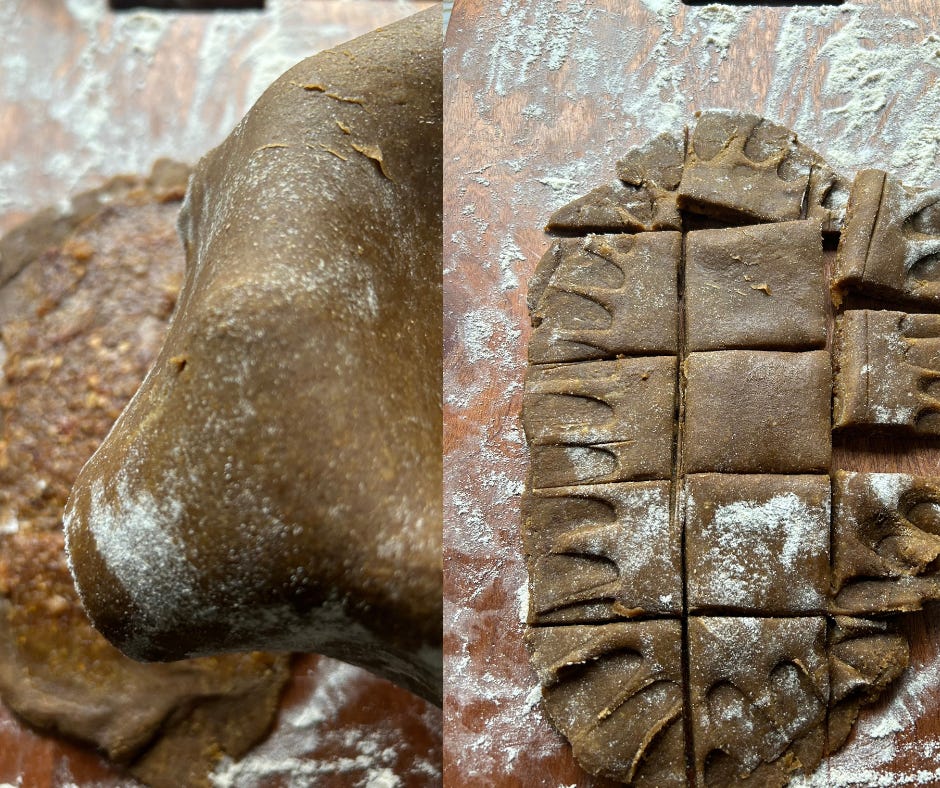
These grains deliver their own flavor and texture experiences. They’re all super nutritious and climate-smart. I made this comic a while back to illustrate the potential of underutilized, less commercialized crops, including the grains I’m discussing here:
Below are a few foods I put together that highlight three such grains: farro, buckwheat and rye.
Bah! I didn’t record the data needed to write out accurate recipes. Will do so next time. But it does make me wonder:
And before we get into it:
I bet you have a friend who loves food and cares about climate change. Will you forward this newsletter to them?
I'm working to expand my audience. Your endorsement would not only help me achieve my goal, but it would be personally touching to me as well 🙂
And now, the foods:
Farro arancini - Farroncini?
I was inspired to make these from one evening when I treated myself to a glass of wine and arancini at a restaurant in my neighborhood. Arancini is a fried ball of grain and cheese -- it's deliciously foolproof.
Farro is an ancient grain that originated in Palestine and later became especially popular in Italy. The blurb below encapsulates both the benefits and challenges of the climate-smart foods I aim to highlight in this newsletter — why they’re “underutilized”:
Farro was grown in Garfagnana since the earliest centuries because it is a product that adapts well to cold climates and higher altitudes. Its agronomic characteristics, however, have always made it very difficult to process, hence limiting its ordinary use. (Source: Italy’s Ministry of Agricultural, Food and Forestry Policies)
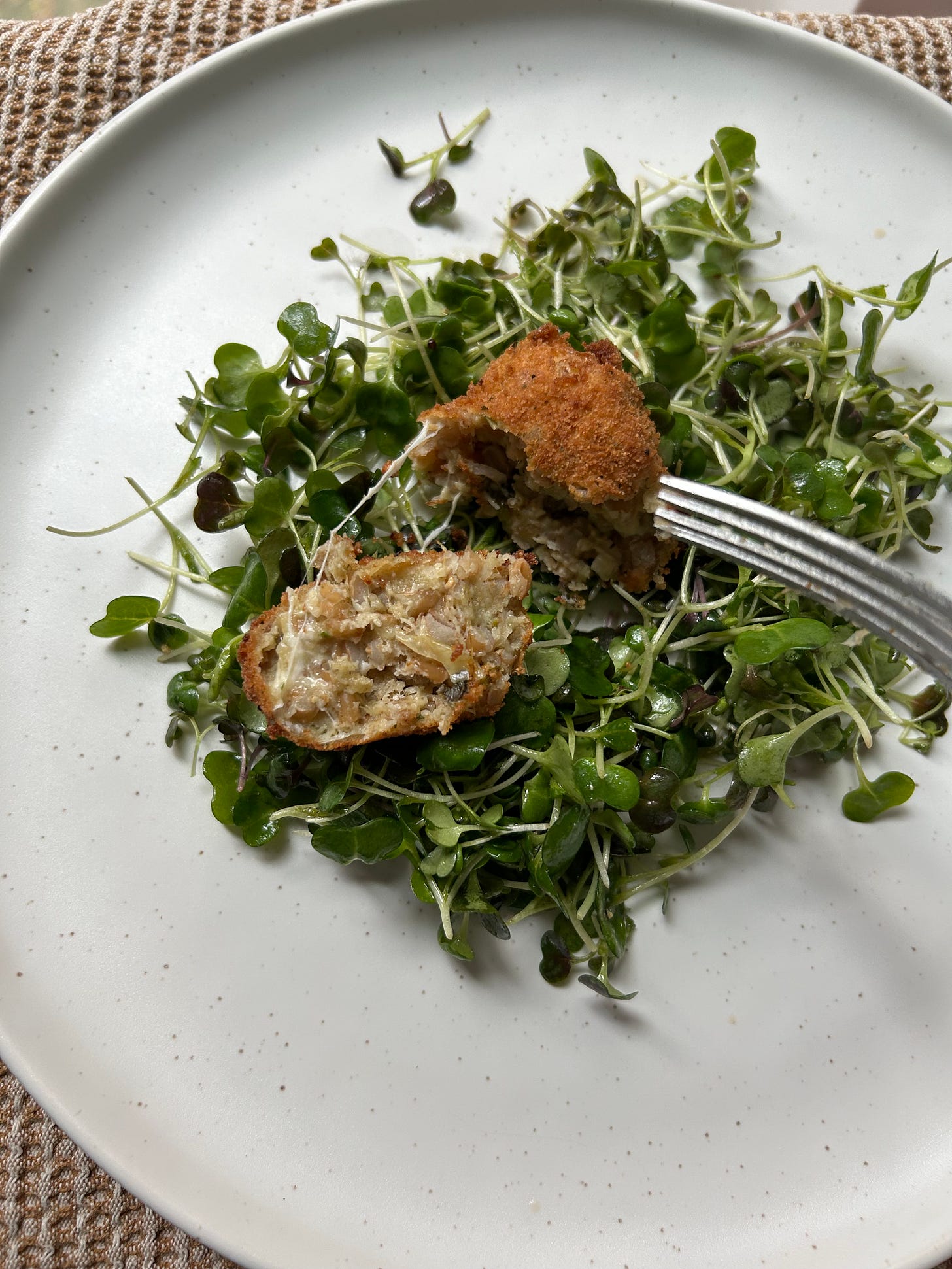
In modern times, farro has overcome these agronomic hurdles to become more widely used in foods like salads and grain bowls, and it’s easy to see why. It has a bouncy texture and a nutty flavor and it's packed with protein and fiber.
Buckwheat Onigiri
Onigiri, the cheerfully jumbo rice balls from Japan, are equally fun to make and eat. Rice stuffed with whatever ingredients your heart desires - what's not to love?
It’s the perfect spherical vehicle to experiment with new-to-you grains.
Below, I added buckwheat groats to my onigiri:
Can you see flecks of groats above? I like this one because it shows that I’m not suggesting white rice/carbs are bad, I just think we ought not to be as dependent on them as we are.
Buckwheat is not technically even a grain — it’s a seed with a high starch content. Like rye, which I’ll write about below, it’s often planted as a cover crop to protect soil, prevent erosion and hold water. Consuming buckwheat is a great way to incentivize growing protective and regenerative cover crops!
It was first cultivated in China some 6,000 years ago and eventually spread to the Himalayas and Europe - where it might sometimes be known as kasha. In Japan, it’s used to make soba, tea and more.
I stuffed these onigiri with sardines (which are also sustainable) sautéed with my tamarind hot sauce Kick + Tang. It’s a subtle tribute to the under appreciated art of Japanese-Indian cooking.
Rye fig newtons
Finally, for dessert, rye fig newtons!
A few months ago, I bought a bag of sprouted rye flour from Castle Valley Mill in Bucks County, PA Reading Terminal on a girls’ trip to Philly. With all the cinnamon rolls and apple pie and fudge they sell there, I knew I wanted to make something sweet with this flour.
The idea for making homemade fig newtons came to me from making the onigiri above. I got most of the ingredients at a Japanese grocery store near my coworking space, and the man there gifted me a pack of cookies. :)
The cookies were made of a cake filled with a gelatinous fruit spread — really good. They reminded me of fig newtons — figs develop that gummy texture too when mashed.
Here’s a stop-motion video I made of the process. The dough is dark because I used treacle (and I think I’ll write a newsletter about diversifying beyond white sugar in baking in the future). And an important last note: figs have an “outsized” role in recreating lost biodiversity.
This is one climate-tough cookie!
Other things on my mind:
Planting season started in my community garden!
Thank you for reading! If you liked this newsletter, will you share it with a friend?


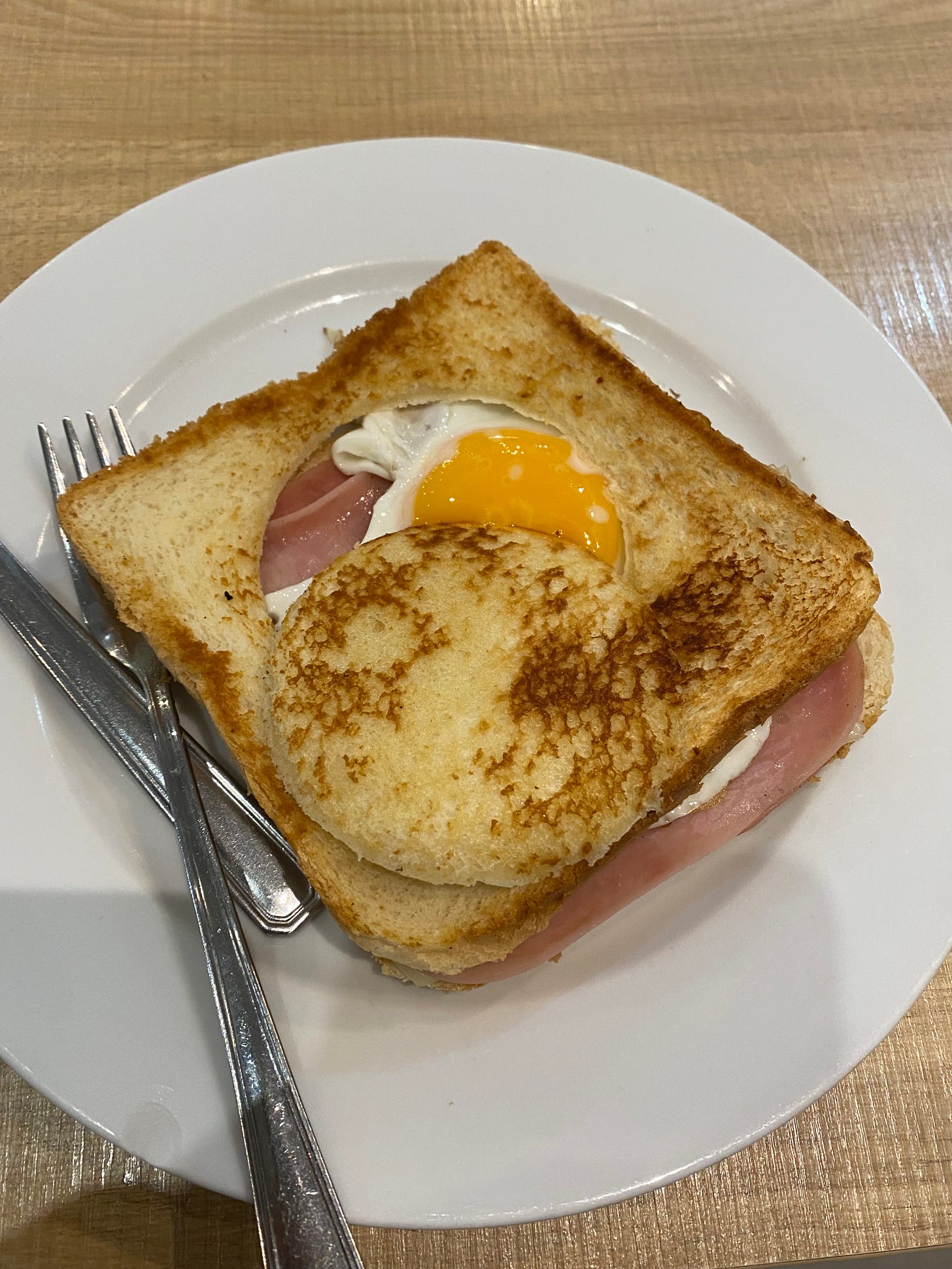




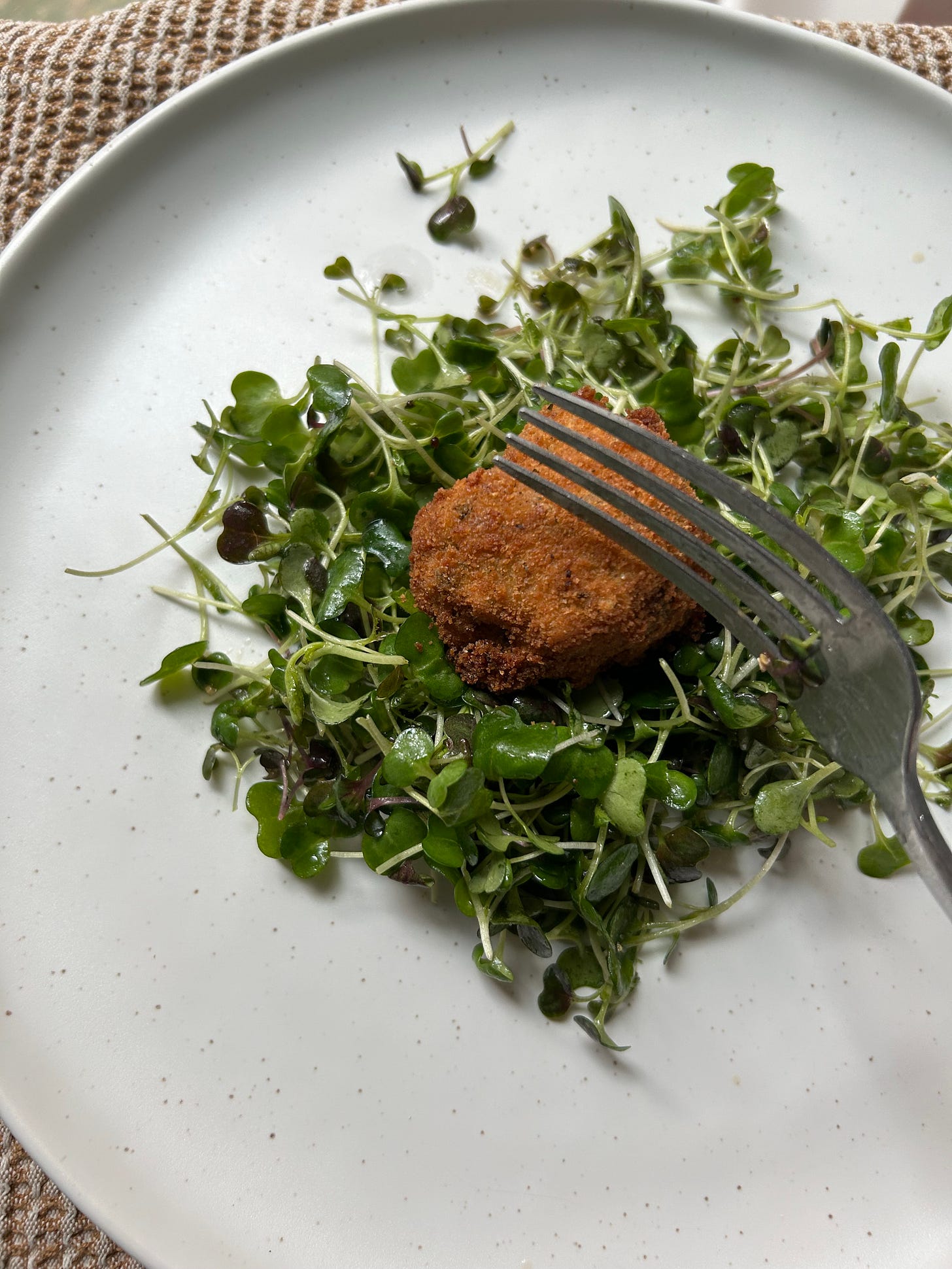
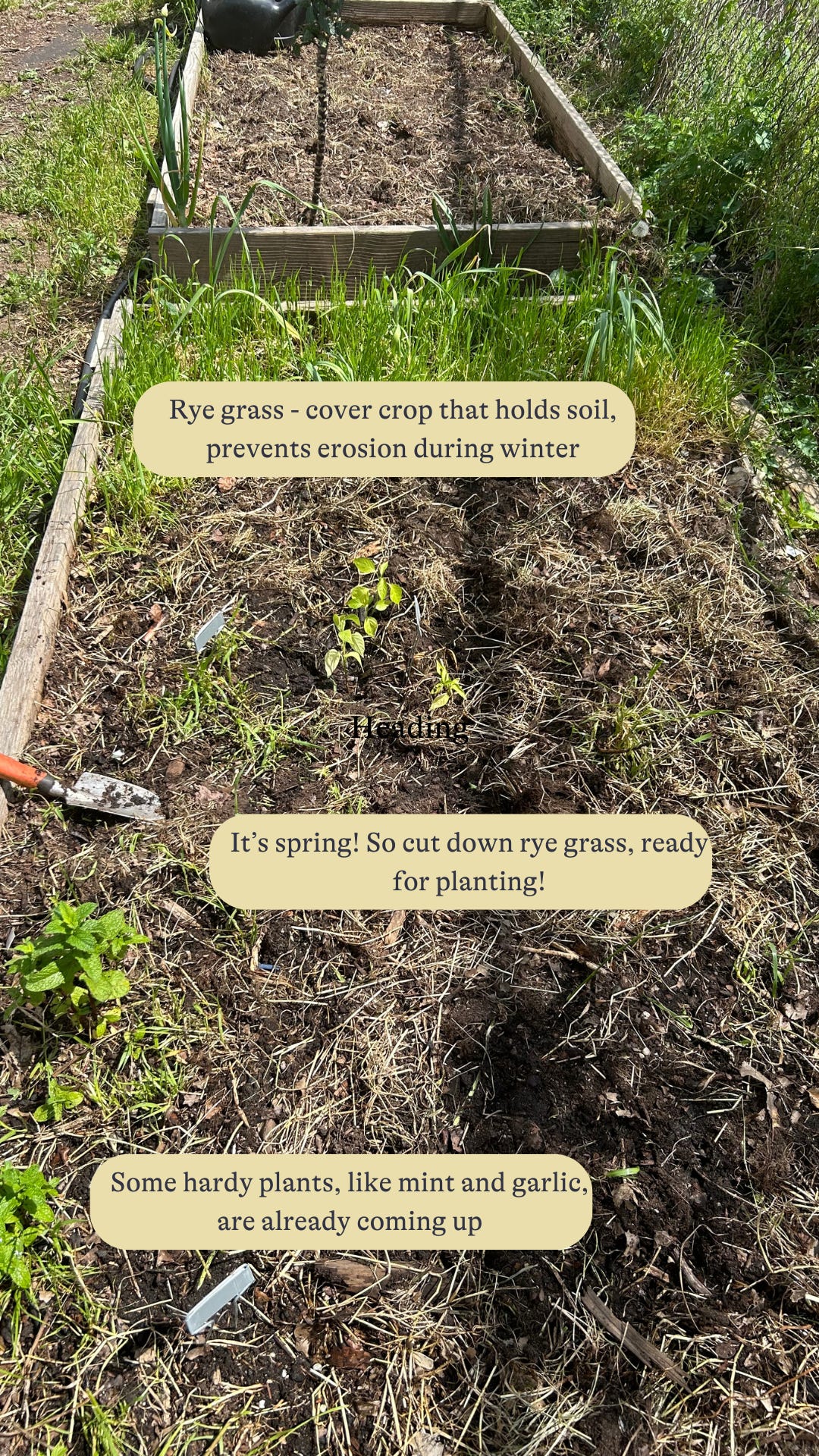

I read this while eating farro jambalaya!